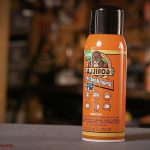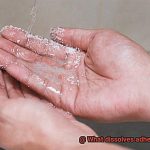Are you tired of that stubborn, hardened epoxy that just won’t give up? Don’t worry, we’ve got your back. There are several ways to dissolve hardened epoxy without breaking a sweat. Epoxy is a strong adhesive that’s commonly used in woodworking and construction projects. But even the most experienced users can face challenges when it comes to removing tough, solidified epoxy.
In this blog post, we’ll explore different methods and substances that can help dissolve hardened epoxy. You’ll learn about solvents, heat, and mechanical means – all effective solutions for removing stubborn epoxy. We’ll also share tips on how to choose the right method based on the type of epoxy and surface it’s adhered to.
Whether you’re a DIY enthusiast or a professional contractor, this blog post is for you. By the end of this article, you’ll have a better understanding of what dissolves hardened epoxy and how to remove it quickly and efficiently. So grab a cup of coffee (or your preferred beverage) and get ready to dive into the fascinating world of epoxy solutions.
Common Chemicals Used to Dissolve Hardened Epoxy
Contents
- 1 Common Chemicals Used to Dissolve Hardened Epoxy
- 2 How to Use Acetone to Dissolve Hardened Epoxy
- 3 How to Use Vinegar to Dissolve Hardened Epoxy
- 4 How to Use Methylene Chloride to Dissolve Hardened Epoxy
- 5 Mechanical Methods for Removing Hardened Epoxy
- 6 Safety Precautions When Using Chemicals to Remove Hardened Epoxy
- 7 Different Types of Surfaces and Materials Suitable for Removing Hardened Epoxy
- 8 Advantages and Disadvantages of Chemical vs Mechanical Removal of Hardened Epoxy
- 9 Conclusion
Working with epoxy can be a challenge, especially once it hardens and becomes a stubborn adhesive. However, there are several common chemicals that can be used to dissolve hardened epoxy and make it easier to remove.
Acetone, one of the most commonly used chemicals, is a potent solvent that can break down the chemical bonds in epoxy. It’s readily available in hardware stores and online, but it’s crucial to exercise caution when working with acetone as it can be flammable and harmful if ingested or inhaled.
Isopropyl alcohol is another strong solvent that can dissolve hardened epoxy. It’s less flammable and less toxic than acetone, making it an excellent option for those who prefer a safer alternative.
Methyl ethyl ketone (MEK) is a potent solvent that can dissolve hardened epoxy quickly. Still, it’s highly flammable and should be used with extreme caution.
Other chemicals that can dissolve hardened epoxy include ethyl acetate, xylene, and N-methyl pyrrolidone (NMP). These chemicals are also robust solvents that can break down the chemical bonds in epoxy, but they may not be as readily available as acetone or isopropyl alcohol.
Before applying any solvent to a larger area, test a small area to ensure it doesn’t have adverse effects on certain materials or surfaces. Additionally, proper safety precautions should always be taken when working with chemicals, including wearing gloves and protective eyewear and ensuring adequate ventilation.
In addition to these chemicals, mechanical methods like using a heat gun or hair dryer to soften the epoxy and then scraping it off with a putty knife or sandpaper can also be effective.
How to Use Acetone to Dissolve Hardened Epoxy
Removing hardened epoxy from surfaces can be a daunting task, but with the right tools, it can be done efficiently. Acetone is a powerful solvent that can dissolve hardened epoxy quickly and easily. However, it is important to follow proper safety precautions and use acetone correctly.
Materials Needed
Before getting started, gather all the necessary materials. You will need a container of acetone, safety goggles, gloves, a scraper or putty knife, and a well-ventilated area. It is essential to have all these materials on hand to ensure a safe and successful process.
Application
Put on your gloves and safety goggles to protect yourself from any potential hazards. Then, apply the acetone to the hardened epoxy using a paintbrush or scraper. Be sure to cover the entire surface area and let it sit for a few minutes to allow the acetone to work its magic.
It’s important to note that acetone can evaporate quickly, so make sure to apply enough to keep it moist for at least several minutes.
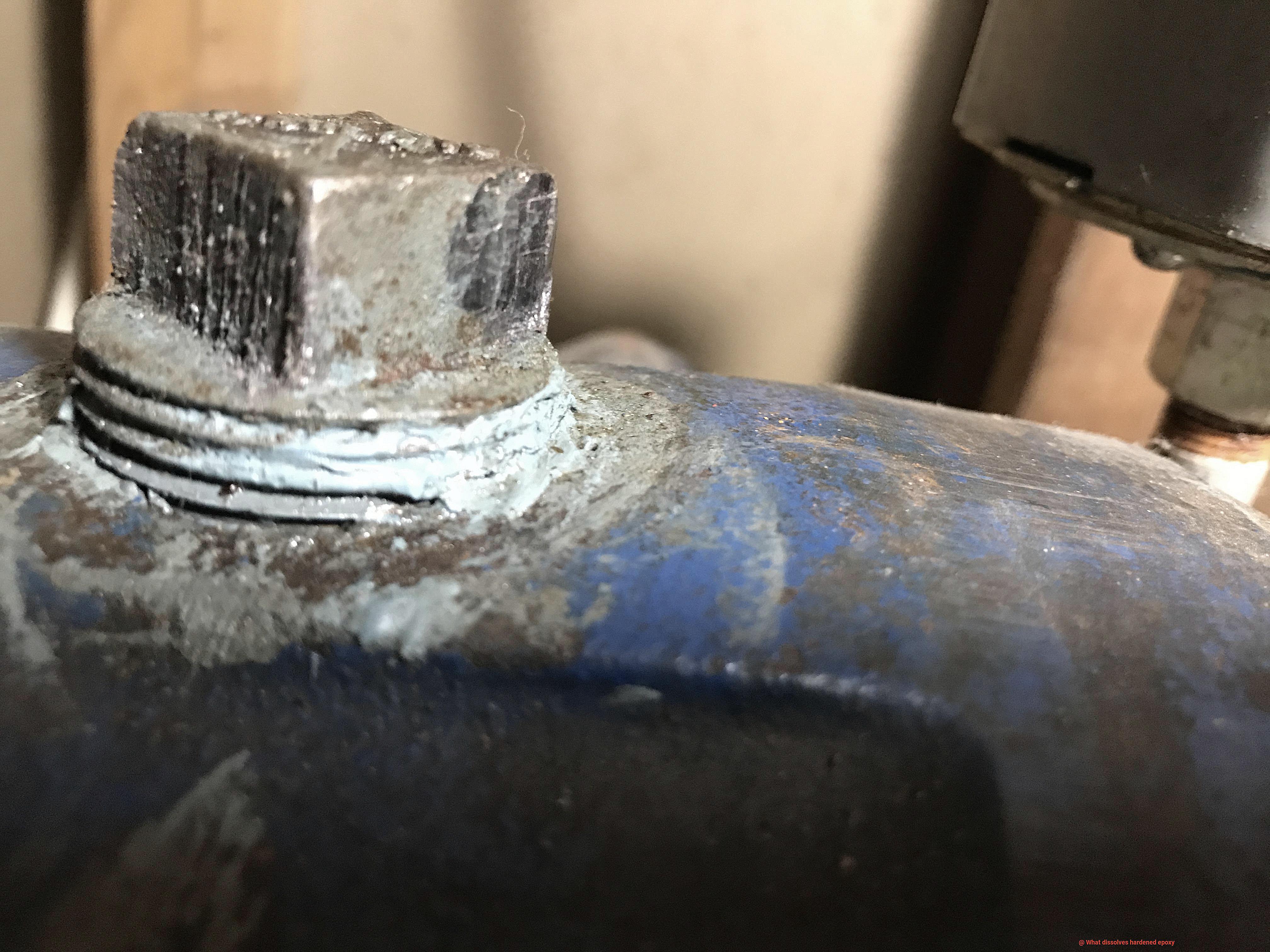
Removing the Epoxy
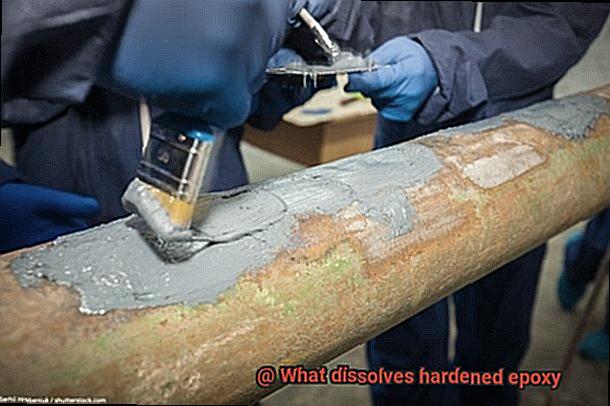
After several minutes, use the scraper or paintbrush to gently remove the dissolved epoxy. Be careful not to apply too much pressure or you may damage the surface underneath. If necessary, repeat this process until all the hardened epoxy has been removed. Be patient and gentle when removing the epoxy to avoid any damage to the underlying surface.
Safety Precautions
It is crucial to take safety precautions when using acetone as it is flammable and can be harmful if ingested or inhaled. Always wear protective gloves, goggles, and clothing when handling acetone and dispose of any rags or cloths soaked in acetone properly. Additionally, ensure that you are working in a well-ventilated area to prevent inhalation of fumes.
Limitations of Acetone
It is important to note that acetone may not work on all types of epoxy and may not completely dissolve all hardened epoxy. In these cases, other solvents such as alcohol or vinegar may be more effective. It’s essential to research and understand the type of epoxy you are dealing with and what solvents work best for that specific type.
How to Use Vinegar to Dissolve Hardened Epoxy
Look no further than vinegar. Vinegar contains acetic acid which is effective in breaking down the molecular bonds of the epoxy, making it easier to remove. Here’s a step-by-step guide on how to use vinegar to dissolve hardened epoxy.
Preparing the Vinegar Solution
To begin, mix equal parts of white vinegar and water in a container to create a vinegar solution. This solution will be used to soak the object with the hardened epoxy.
Soaking the Affected Area
Place the object with the hardened epoxy into the vinegar solution and let it soak for several hours or overnight. The soaking process allows the vinegar solution to penetrate the epoxy and dissolve it.
Scraping off the Epoxy
After soaking, use a scraper or putty knife to gently remove the epoxy. Be sure to wear gloves and eye protection during this process since both vinegar and epoxy can be harmful if they come into contact with your skin or eyes.
Repeating the Process
If there is still some epoxy remaining, soak the object in vinegar again and repeat the scraping process until all of it has been dissolved.
Heating up the Vinegar Solution
To make the vinegar more effective, heat it up before applying it to the hardened epoxy. Place the vinegar in a pot on the stove and heat it up until it’s hot but not boiling.
Covering the Affected Area
Covering the affected area with plastic wrap or a bag helps prevent evaporation of the vinegar solution, allowing it to work its magic for several hours. After several hours, you can check on the epoxy to see if it has started to dissolve. If not, reapply the vinegar and let it sit for several more hours.
How to Use Methylene Chloride to Dissolve Hardened Epoxy
Removing hardened epoxy can be a daunting task, but with methylene chloride, it can become a breeze. This powerful solvent can effectively dissolve hardened epoxy, making it easier to remove. However, it’s crucial to use methylene chloride safely and correctly to avoid any harm.
Here are five sub-sections to follow when using methylene chloride to dissolve hardened epoxy:
- Safety first: Before starting, ensure that you have all the necessary protective gear, including gloves, goggles, and a respirator mask. Methylene chloride is highly toxic and can be harmful if inhaled or absorbed through the skin. Protecting yourself from exposure is crucial.
- Apply the solvent: Once you’re geared up, clean the surface of any dirt or debris. Then, apply the methylene chloride directly onto the hardened epoxy. Allow it to sit for at least 30 minutes so that it can fully penetrate the epoxy and begin breaking down its chemical bonds.
- Remove the softened epoxy: Using a scraper or putty knife, gently remove the softened epoxy. Be careful not to scratch or damage the underlying surface. If necessary, repeat the process until all of the hardened epoxy has been dissolved.
- Dispose of the solvent properly: Once you’re done with the task, dispose of any used methylene chloride according to your local regulations. Remember to follow all safety guidelines when handling this powerful solvent.
- Test surfaces before use: While methylene chloride can dissolve hardened epoxy effectively, it’s not suitable for all surfaces. It can damage certain materials such as plastics and rubber. To avoid damaging any surface, test a small area before applying it to a larger area.
Mechanical Methods for Removing Hardened Epoxy
There are effective mechanical methods for removing it, and we’re here to explore the best techniques for scraping away that pesky epoxy.
First up is sanding. Using sandpaper or a sanding machine, you can grind away the hardened epoxy and reveal the surface underneath. Starting with a coarse grit sandpaper and gradually working to a finer one is key to avoid damaging the underlying surface.
If you’re feeling more patient, chipping away at the epoxy with a scraper or putty knife might be your method of choice. This method requires precision and patience but can be very effective. Be sure to use a sharp tool and take your time to avoid causing any damage.
Heat can also be used as a mechanical method for removing hardened epoxy. Using a heat gun or blowtorch, you can soften the epoxy and then scrape it away. However, it’s crucial to be careful not to apply too much heat as it can cause damage to the underlying surface.
Lastly, power tools like rotary tools or grinders can be used for small or hard-to-reach areas. These tools require some skill and practice but can be very effective in removing stubborn areas of epoxy.
Remember to use caution when using any mechanical method for removing hardened epoxy. Follow instructions carefully and take your time to avoid damaging the underlying surface. With these techniques in your toolbox, you’ll be able to say goodbye to that stubborn epoxy in no time.
Safety Precautions When Using Chemicals to Remove Hardened Epoxy
Removing hardened epoxy can be a challenging task, but using chemicals can make the job much easier. However, it’s crucial to take safety precautions to avoid potential harm. Here are some essential tips for ensuring a safe and effective removal process.
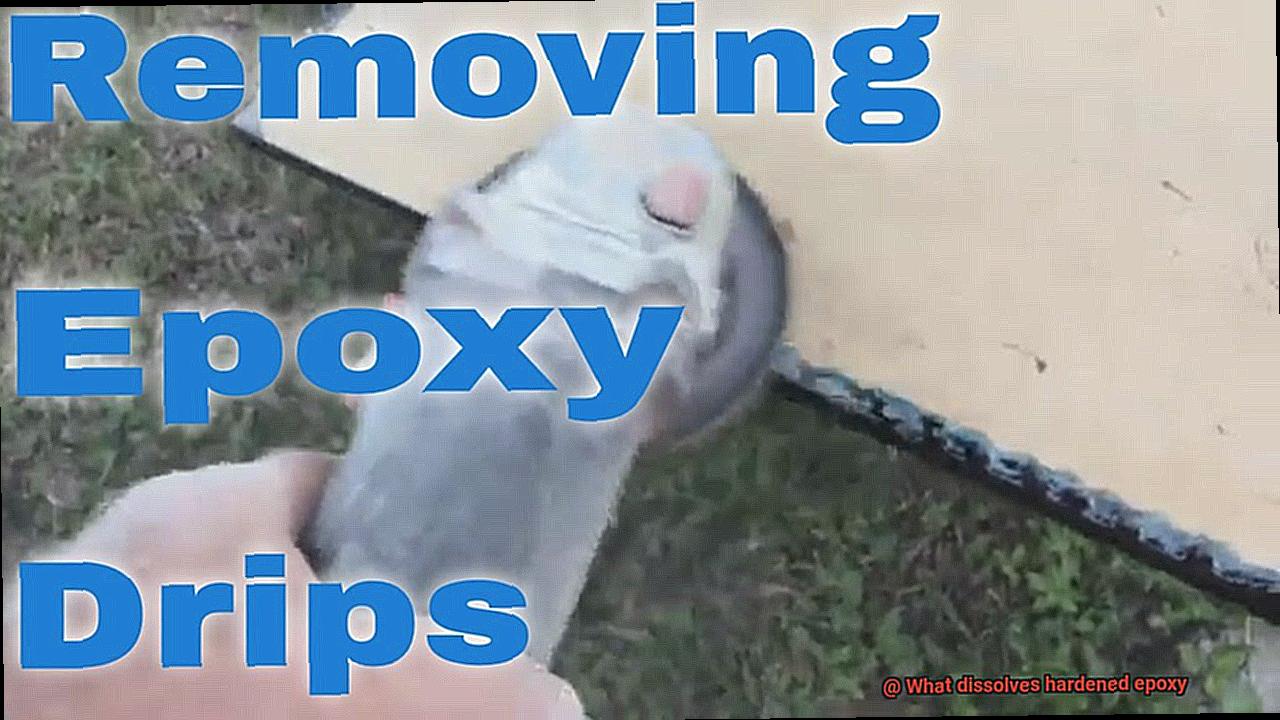
Firstly, ensure that you’re working in a well-ventilated area. Epoxy removers can release harmful fumes that can cause respiratory problems, so it’s best to work outside or in an area with open windows and doors. Additionally, wearing appropriate protective gear is crucial. Gloves will protect you from direct contact with the chemicals, while goggles will prevent any splashes or spills from entering your eyes. A respirator mask will filter out any harmful fumes you may inhale while working with the chemicals.
Before using any chemicals, read the product label carefully and follow the manufacturer’s instructions. Some chemicals can be dangerous if not used properly, so understanding the risks and how to mitigate them is crucial.
It’s also important to properly dispose of any chemicals and materials used in the process. Check with your local waste management facility for proper disposal methods for chemicals and other hazardous materials.
In summary, here are some safety precautions when using chemicals to remove hardened epoxy:
- Work in a well-ventilated area
- Wear appropriate protective gear such as gloves, goggles, and a respirator mask
- Read the product label carefully and follow the manufacturer’s instructions
- Properly dispose of any chemicals and materials used
Different Types of Surfaces and Materials Suitable for Removing Hardened Epoxy
Removing hardened epoxy can be a daunting task, especially if you’re not sure which methods and tools to use. To effectively remove epoxy, it’s important to consider the type of surface or material that it’s adhered to. Here are some methods and tools suitable for removing hardened epoxy from different surfaces:
Metal Surfaces
Metal surfaces are durable and can withstand more abrasive methods of epoxy removal. Using a heat gun can soften the epoxy, making it easier to scrape off with a wire brush or sandpaper. Alternatively, solvents such as acetone or paint thinner can break down the epoxy, making it easier to remove.
Plastic Surfaces
While plastic surfaces are more delicate, there are still effective ways to remove hardened epoxy. For gentle removal, use a plastic scraper or spatula to scrape away the epoxy. Rubbing alcohol or acetone can also dissolve the epoxy without damaging the plastic.
Wood Surfaces
Wood surfaces require more caution when removing hardened epoxy as they can be easily damaged by harsh chemicals and abrasives. Soften the epoxy with a heat gun and scrape it off with a wooden scraper. Alternatively, denatured alcohol or mineral spirits can dissolve the epoxy without harming the wood.
Concrete Surfaces
Concrete surfaces are commonly used in industrial settings where epoxy is prevalent. Use a chemical solvent designed specifically for removing epoxy from concrete or use a pressure washer with hot water and a high-pressure nozzle to blast away the epoxy.
Glass Surfaces
Removing hardened epoxy from glass surfaces requires careful handling of razor blades or scraping tools to avoid scratching the glass. Be sure to wear gloves and protective eyewear when using these tools.
Regardless of the surface or material, always wear protective gear such as gloves, goggles, and respirators when removing hardened epoxy. Follow any safety instructions provided by the manufacturer of the product being used to ensure safe and effective removal.
Advantages and Disadvantages of Chemical vs Mechanical Removal of Hardened Epoxy
When it comes to removing hardened epoxy, there are two methods at your disposal: chemical and mechanical removal. Both methods have their own unique advantages and disadvantages that you should consider before deciding which one to use.
Chemical removal involves using a solvent or chemical to dissolve the epoxy. Acetone is the most popular chemical for this purpose, but other options like methylene chloride, dimethylformamide, and ethyl acetate can also get the job done. The main advantage of chemical removal is that it requires less physical effort compared to mechanical removal.
Chemical solvents can penetrate into small crevices and cracks where mechanical tools may not be able to reach, making them ideal for removing epoxy from delicate surfaces without causing damage.
However, there are also some downsides to chemical removal. These chemicals can be hazardous and require proper safety precautions such as wearing gloves and a mask during application. Additionally, some solvents may cause damage to certain types of surfaces or materials.
Mechanical removal, on the other hand, involves physically grinding away the epoxy using abrasive tools such as sandpaper, grinding wheels or chisels. This method is effective in removing thick layers of epoxy or in areas where chemical solvents cannot reach. It’s also a more environmentally friendly option since there is no need for disposal of toxic chemicals.
However, mechanical removal does require more physical effort and time compared to chemical removal. It can also cause damage to delicate surfaces if not done carefully. But with the right tools and technique, you can easily remove hardened epoxy without damaging the surface underneath.
v6LuNGv4IKo” >
Conclusion
In conclusion, removing hardened epoxy can be a daunting task, but fear not – there are several effective methods to make it easier. Chemical solvents like acetone, isopropyl alcohol, and methyl ethyl ketone can dissolve the chemical bonds in epoxy, rendering it simpler to remove. However, caution must be exercised when working with chemicals; always wear protective gear.
If you prefer a more hands-on approach, mechanical methods such as sanding or scraping with a putty knife or heat gun can also be effective in removing stubborn epoxy. It’s essential to select the right method based on the type of surface or material that the epoxy is adhered to.
When using chemicals or mechanical tools for removing hardened epoxy, safety precautions should always be taken. Wear appropriate protective gear and dispose of any used materials properly.
Additionally, consider the advantages and disadvantages of each method before deciding which one to use.



